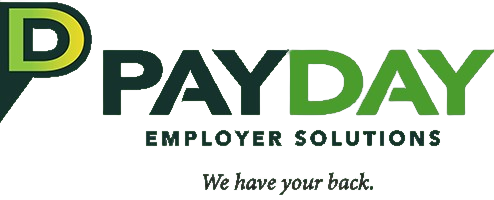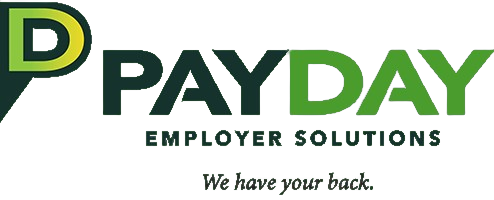The landscape of Human Resources (HR) is undergoing a seismic shift. As we approach mid 2025, organizations must confront a series of formidable challenges to remain competitive and foster a thriving workforce. From integrating AI to navigating compliance and employee well-being, HR leaders must take a proactive approach to remain ahead of the curve.
Let’s break these challenges down and solve them with strategy that actually works.
1. AI & Automation in HR: The Game-Changer That Can Backfire
Technology is revolutionizing HR, and AI-driven automation is at the forefront. Companies are increasingly using artificial intelligence for recruiting, onboarding, and workforce management. However, while automation enhances efficiency, it also raises concerns about job displacement, ethical AI use, and maintaining the human touch in HR processes.
The infusion of AI in HR promises enhanced efficiency but also poses risks such as unintended biases and the potential erosion of the human touch in decision-making.

The Challenge
AI is everywhere—automating recruitment, scanning resumes in seconds, and even predicting which employees might quit. But here’s the problem: if used incorrectly, AI can introduce bias, dehumanize HR, and lead to poor hiring decisions.
How to Overcome It
- Balance Tech with Human Judgment – AI can suggest, but humans must decide. Use it for efficiency, not as a replacement.
- Train Your HR Team in AI Ethics – Understand AI biases and audit your systems to ensure fairness.
- Use AI to Enhance Employee Experience – Think chatbots for HR queries, AI-driven career pathing, and personalized learning recommendations.
2. Remote & Hybrid Work: The Productivity Puzzle
The office, as we knew it, is history. Remote and hybrid setups are now the norm. Organizations must find ways to balance employee flexibility with productivity while maintaining company culture. Without proper HR systems in place, managing a dispersed workforce can lead to communication gaps and reduced engagement.
Investing in the right HR systems can help redefine efficiency and support teams in these evolving work models.

The Challenge
Some love working from home. Others feel disconnected. Managers struggle to maintain culture, productivity, and engagement.
How to Overcome It
- Set Clear Work-from-Anywhere Policies – Expectations around response times, availability, and outcomes matter.
- Invest in Engagement Tools – Platforms like Asana, Slack, and Zoom help bridge communication gaps.
- Reinvent “Watercooler Moments” – Virtual coffee chats, in-person meetups, and stronger digital connections keep teams aligned.
3. Employee Well-Being & Mental Health: The New Corporate Currency
Workplace well-being has shifted from a perk to a necessity. Employees today expect their organizations to support mental health, prevent burnout, and create a work-life balance. Companies that fail to prioritize well-being will struggle with higher turnover and reduced employee engagement.
Addressing the increasing prevalence of burnout and supporting employees’ mental health is critical for sustaining a productive workforce.

The Challenge
Burnout is real. Employees expect more than just a paycheck—they demand mental health support, work-life balance, and a sense of purpose.
How to Overcome It
- Offer More Than Just “Wellness Perks” – Meditation apps are great, but real support might mean mental health days, therapy benefits, and flexible work hours.
- Train Leaders in Emotional Intelligence – A bad boss is the fastest way to employee turnover. Equip managers to support their teams.
- Measure Employee Well-Being – Use surveys and one-on-one check-ins to track stress levels and proactively address burnout.
4. Talent Shortages & Skills Gaps: Finding and Keeping the Best
The job market is evolving rapidly, with new skills becoming essential almost overnight. Employers are struggling to find qualified candidates, and traditional hiring methods are no longer enough. Companies must rethink their approach by focusing on skills-based hiring and continuous employee development.
Tech’s moving fast, and the job market’s struggling to keep up.
The Challenge
Recruiting is tough. The best talent has options, and the skills required for jobs are changing faster than ever.
How to Overcome It
- Shift to Skills-Based Hiring – Stop over-relying on degrees. Hire for skills, train for gaps.
- Create Career Growth Pathways – Employees stay where they see a future. Invest in training, mentorship, and promotions.
- Build a Magnetic Employer Brand – Showcase your company’s culture, mission, and values to attract top talent before they even apply.
5. Payroll Management & Compliance: Keeping Up with Changing Regulations
With businesses expanding across different states and countries, compliance is becoming more complex than ever. Labor laws are constantly changing, and HR teams need to ensure that payroll, taxes, and benefits remain legally compliant. Failing to stay updated can result in heavy fines and reputational damage.
Staying abreast of changing labor laws and ensuring payroll compliance, especially with a geographically dispersed workforce, is increasingly complex.
The Challenge
Between tax laws, remote worker compliance, and new labor regulations, payroll is a legal minefield.
How to Overcome It
- Automate Payroll Processing – Reduce errors and compliance risks with smart payroll software.
- Stay Updated on Labor Laws – Global payroll compliance is complex—work with experts who specialize in multi-country payroll.
- Offer Flexible Pay Options – Employees increasingly want on-demand access to their earnings.
6. Employee Benefits & Compensation: Meeting Higher Expectations
Competitive salaries are no longer enough to attract and retain top talent. Employees today value comprehensive benefits packages, including health insurance, flexible work arrangements, and financial wellness programs. HR teams must create compensation strategies that align with employee expectations while staying within budget.
Utilizing a payroll calendar can help organizations streamline scheduling and ensure timely, compliant payroll processes.
The Challenge
Competitive salaries aren’t enough. Employees expect flexible benefits, better healthcare, and financial wellness support.
How to Overcome It
- Customize Benefits for Different Generations – Gen Z wants student loan assistance, Millennials want work-life balance, Boomers want retirement support.
- Prioritize Pay Transparency – Open discussions about salaries build trust and reduce turnover.
- Introduce Financial Wellness Programs – Help employees manage debt, save, and invest for their future.
HR in 2025 is About Being Proactive, Not Reactive
HR isn’t just about hiring and firing anymore—it’s about shaping the future of work. The challenges are big, but so are the opportunities. The companies that adapt will attract top talent, keep employees engaged, and build workplaces people love.
What’s Your Next Move?
- Review your HR strategy—what’s working, and what needs to change?
- Invest in technology and training to future-proof your workforce.
- Start conversations with your team—what do they really need to thrive?
Struggling with payroll management? Let Payday Employer Solutions handle it for you—so you can focus on growing your team. Talk to us today and keep your business moving.







